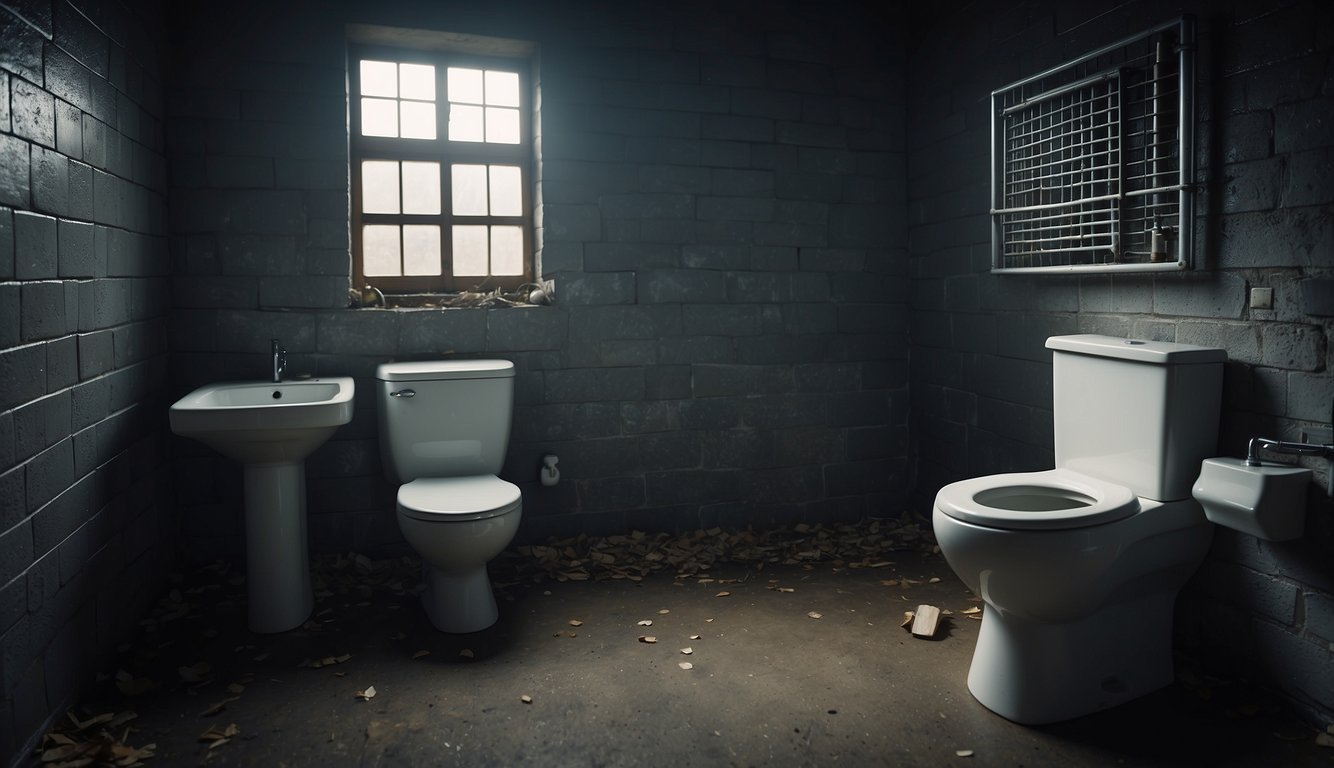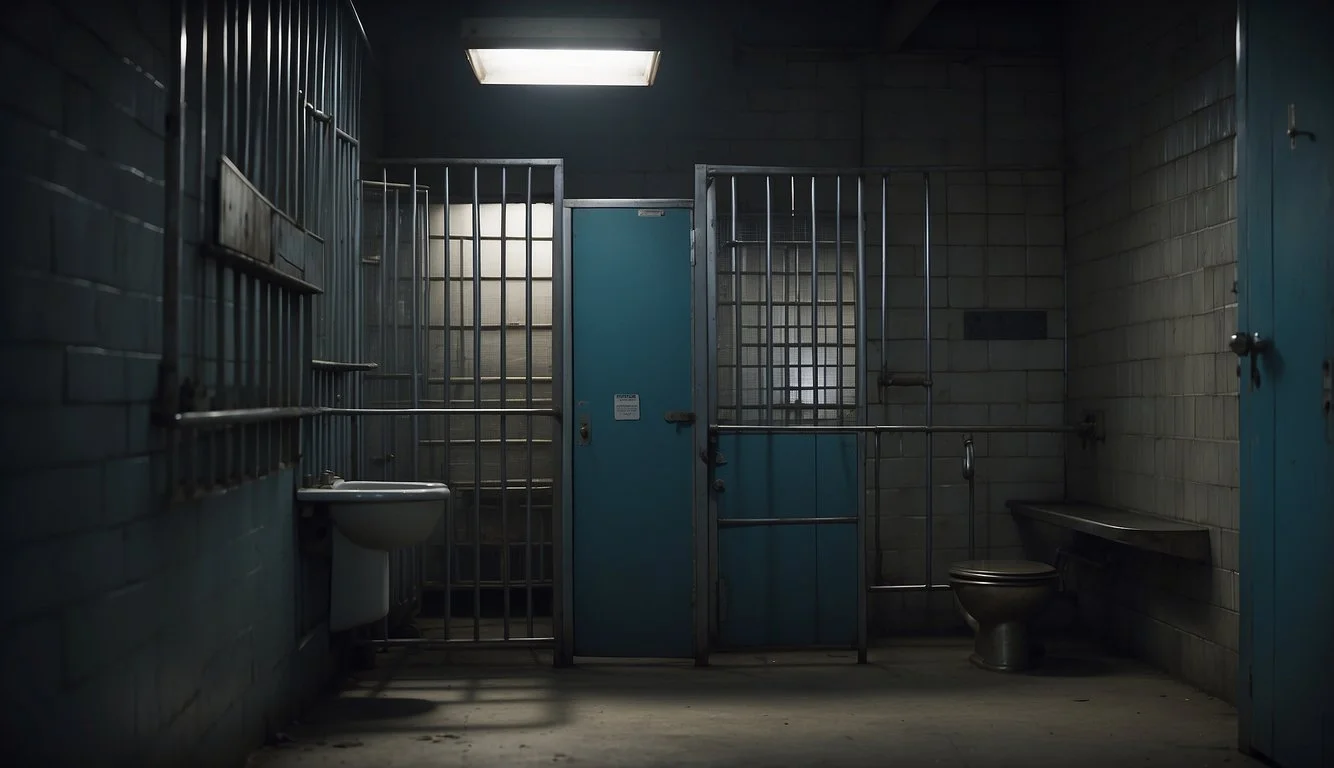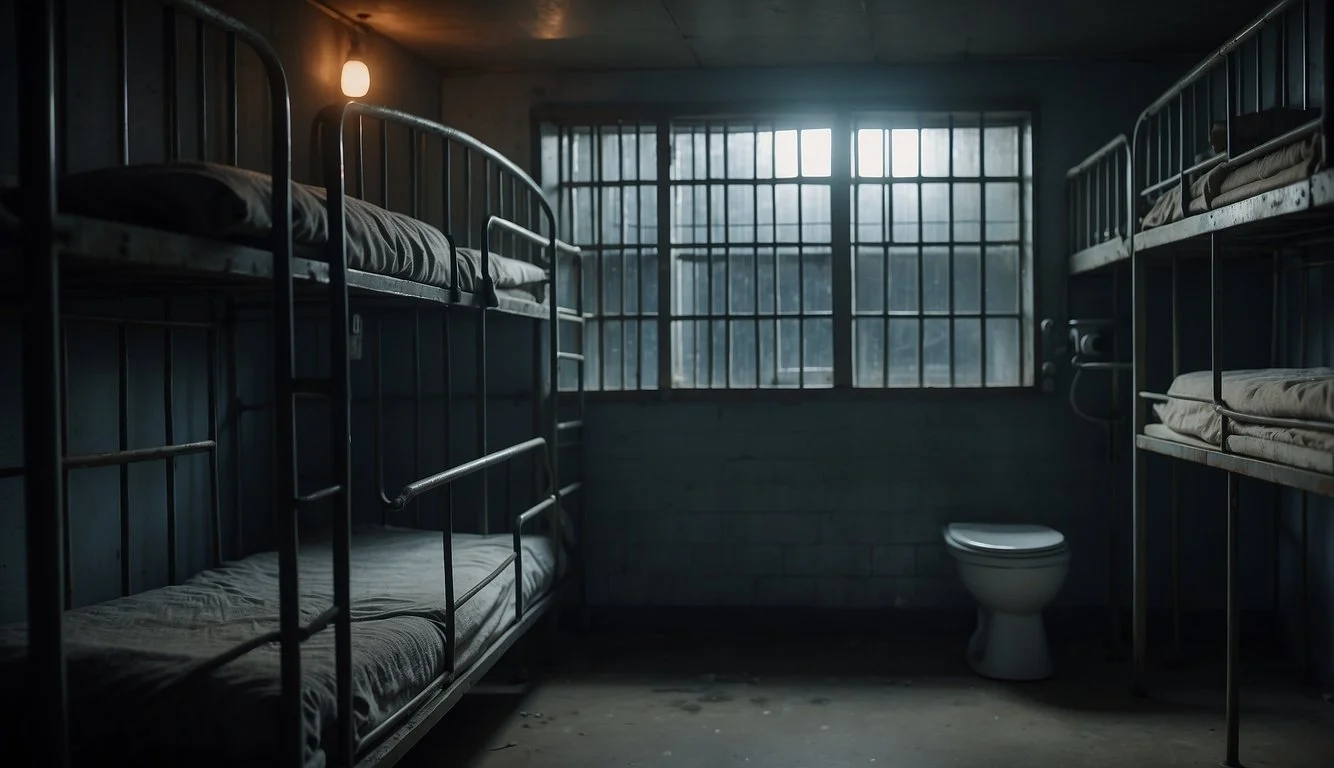Documentary Review: Inside the World’s Toughest Prisons (2023)
An Intense Exploration of Prison Realities
"Inside the World’s Toughest Prisons" (2023) offers an eye-opening exploration into the harsh realities faced by inmates in some of the most notorious prisons worldwide. This season, hosted by Raphael Rowe, delves deeper into the broken systems and the day-to-day lives of those incarcerated. The series provides a raw, unfiltered look at how different countries handle imprisonment and the impact of these environments on human lives.
Since its inception in 2016, the show has taken viewers inside prisons around the world, from South America to Europe, and beyond. Season 7 continues this tradition, featuring first-hand accounts from inmates and staff, highlighting both the struggles and the resilience found within prison walls. The host’s personal experience with wrongful imprisonment adds a unique and compelling perspective to the series.
Through its candid portrayal of prison life, the series challenges viewers to rethink preconceived notions about justice systems worldwide. By showcasing both the failures and rare successes within these institutions, "Inside the World’s Toughest Prisons" aims to spark a conversation about the broader implications of incarceration.
Overview of the Series
Inside the World’s Toughest Prisons is a captivating documentary series that offers an in-depth look into some of the most notorious prisons around the globe. The series not only explores the living conditions of inmates but also provides insight into the challenges faced by prison staff.
Concept and Format
Inside the World's Toughest Prisons delves into the lives of inmates and guards within various correctional facilities worldwide. Hosted initially by Paul Connelly, and later by Raphael Rowe, each episode focuses on a unique prison and its inhabitants.
Episodes typically follow a format where the host immerses himself in the prison environment. This includes sharing cells with inmates and experiencing daily routines. This firsthand perspective adds authenticity and depth to the portrayals.
Production Background
Produced by London-based Emporium Productions, the series first premiered on Netflix in 2016. It is notable for its raw and unfiltered representation of prison life. Raphael Rowe, who joined in the second season, adds a personal touch. He brings unique empathy as someone who was wrongfully imprisoned for 12 years.
Filming takes place inside actual prisons, which are often fraught with risks due to volatile environments. The show's production team secures permissions and deals with significant security protocols to capture these real-life scenarios.
Series Reception
Viewers and critics have generally received the series positively. It has earned praise for shedding light on prison conditions and humanizing inmates. The empathetic approach of hosts like Raphael Rowe has been particularly well-regarded. Critics appreciate the depth and honesty portrayed in difficult settings.
Criticism often centers on the harrowing and sometimes disturbing content, which can be challenging for some viewers. Despite that, the series has maintained a strong viewership, indicating its compelling nature. The balance of raw footage and insightful commentary helps maintain its popularity.
Critical Analysis
The documentary "Inside the World’s Toughest Prisons" delves into various prison systems worldwide, offering a gritty and raw perspective. Analysis in this section covers the narrative and storytelling, authenticity in prison representation, and the methods used for interviews and interactions with subjects.
Narrative and Storytelling
The narrative structure is compelling, threading personal stories with broader systemic issues. Raphael Rowe, the host, brings a unique perspective as someone who has experienced incarceration.
This personal touch enhances the storytelling, making viewers more invested. Each episode is carefully crafted to juxtapose different conditions and challenges in varied prison environments, creating a stark contrast that highlights disparities and commonalities.
Authenticity and Representation of Prisons
The series excels in authenticity, providing a realistic portrayal of prison conditions. The choice of locations, from high-security prisons to those struggling with drug issues, is well-curated and purposeful.
The show does not shy away from exposing harsh realities, but it also refrains from sensationalism. This balance is crucial for maintaining credibility. The involvement of actual inmates and staff provides a genuine inside look that texts and second-hand accounts cannot.
Interview Techniques and Subject Interaction
Raphael Rowe’s interviewing technique is a standout feature. His approach is empathetic yet probing, allowing subjects to open up while staying focused on uncovering truths. Interaction with inmates and staff is conducted in a respectful, inquisitive manner, which helps in gaining trust and insightful responses.
The series benefits from this human-centric approach, turning interviews into powerful narratives that contribute significantly to the documentary’s impact.
Episode Breakdown
"Inside the World's Toughest Prisons" Season 7 offers a riveting exploration of prison conditions across different countries. The series features in-depth interviews and unveils harsh realities within correctional facilities.
Notable Episodes
One of the standout episodes is set in Kylmäkoski, Finland. Host Raphael Rowe navigates through the starkly quiet wings of the prison, contrasting it with the bustling environment typically seen in other facilities. The episode introduces viewers to inmates like Toni, Fuzzy, Michael, and Jani, shedding light on their daily routines and personal stories.
Another compelling episode takes place in the Philippines' New Bilibid Prison. It's known for its overpopulation and dire conditions. Rowe's interaction with both the prisoners and the guards highlights the struggles of managing such a colossal institution, making it one of the most eye-opening moments of the series.
Key Interviews
The series features significant interviews, including an in-depth conversation with Toni, an inmate at Kylmäkoski Prison. Toni shares his experiences and offers insights into the unique rehabilitative approach of the Finnish prison system.
Another key interview is with the warden of the New Bilibid Prison. The warden discusses the challenges of overseeing an overcrowded facility and efforts to implement reforms. These interviews are crucial in providing a human perspective on the systemic issues explored throughout the series.
These episodes and interviews give viewers a comprehensive understanding of the varied conditions in global prisons and the human stories behind them.
Comparative Study
In 2023, "Inside the World’s Toughest Prisons" continues to showcase the harsh realities of prison life around the globe. The seventh season offers a fresh perspective, comparing new episodes with similar documentary series and previous seasons.
Similar Documentary Series
Prison State and Louis Theroux: Behind Bars are notable mentions. Prison State provides an intense look at the American prison system, focusing on systemic issues related to mass incarceration. Much like "Inside the World’s Toughest Prisons," it captures personal stories and institutional flaws.
Louis Theroux: Behind Bars takes a more personal and immersive approach. Unlike Rowe’s global expedition, Theroux's series revolves primarily around specific American prisons, offering viewers an intimate yet diverse experience. The storytelling method in Theroux’s work is more personal, compared to the investigative style of Rowe.
Contrasts with Previous Seasons
Season seven of "Inside the World’s Toughest Prisons" examines the Czech Republic's so-called "crystal meth prison," diverging from earlier seasons which often focused on broader themes such as corruption and overcrowding.
Raphael Rowe’s unique journey continues to underline rehabilitation methods and prisoner relationships, but this season stands out with its quiet but intense scenes in facilities like Kylmäkoski Prison. This contrasts with earlier seasons where the focus was on chaotic and violent environments. The latest season's calmer yet equally stark portrayal provides a deeper, more nuanced understanding of prison life.
In summary, Season seven distinguishes itself by focusing on both unique case studies and evolving penal theories, offering a balanced yet detailed depiction of the world's toughest prisons. The nuanced shift from broad overviews to specific cases makes it particularly engaging.
Technical Aspects
The technical elements of Inside the World’s Toughest Prisons (2023) enhance its immersive quality and provide depth to its storytelling. The cinematography, editing, sound design, and music work in harmony to create a compelling viewing experience.
Cinematography
The cinematography in Inside the World’s Toughest Prisons is both raw and polished. Close-up shots of inmates and guards capture the intensity of their expressions, while wide shots of the prison environment give a sense of scale and confinement. The series employs a mix of handheld and stationary cameras, allowing viewers to feel present in the unfolding scenes. Lighting is often natural, adding authenticity and emphasizing the starkness of life inside prison walls. Drone shots occasionally provide aerial views, enhancing the visual narrative with perspectives that underline the isolation and structure of the prison facilities.
Editing and Sound Design
Editing plays a crucial role in maintaining the pacing and clarity of the documentary. Transitions between scenes are smooth, often employing fade-ins and fade-outs to create a seamless narrative flow. Flashbacks and intercuts are used sparingly yet effectively to provide context without disrupting the chronology. The sound design complements the visual storytelling by focusing on ambient sounds that characterize the prison environment, like the clanging of cell doors and distant shouts. Dialogue is clear, with background noise carefully balanced to ensure that viewers can easily follow the conversations. Enhanced audio elements during tense moments heighten the overall atmosphere.
Music and Scoring
The musical score in Inside the World’s Toughest Prisons underscores the emotional and psychological landscapes explored in the series. Music ranges from subtle, tension-building compositions to more dramatic pieces during critical moments. The use of local music when detailing specific prisons adds cultural context and depth. The score never overwhelms but rather complements the on-screen action, often providing a subconscious layer of emotional enrichment. In some instances, silence is used strategically to amplify the rawness of the depicted scenes, making the viewer feel the gravity of the situation being presented.
Ethical Considerations
The series "Inside the World's Toughest Prisons" raises important ethical questions around the privacy of inmates and the potential consequences of filming. These aspects must be weighed to ensure responsible documentary filmmaking.
Inmate Privacy
Filming in prisons poses significant challenges related to inmate privacy. Consent is crucial; inmates should agree to participate under conditions that respect their dignity. Their personal stories, health information, and interactions are often sensitive and should be protected.
Documentarians must balance revealing the truth about prison conditions with safeguarding the inmates' identities. There can be a risk that the exposure might inadvertently lead to retaliation or discrimination against the featured inmates. Thus, maintaining a sensitive approach towards their anonymity and privacy is vital for ethical storytelling.
Impact of Filming
The presence of cameras in prisons can alter behaviors and daily operations. This altered reality may not accurately represent the genuine conditions and experiences of inmates. The prison staff and inmates might act differently, knowing they are being recorded, which can skew the documentary's portrayal.
Additionally, filming can sometimes disrupt the prison environment, causing stress or tension among inmates and staff. Ethical filmmakers must consider these impacts and strive to minimize any potential harm caused by their presence. They should work closely with prison authorities to ensure filming does not interfere with inmates' well-being or the institution's operations.
Viewer Reception and Impact
"Inside the World's Toughest Prisons" has sparked significant conversation among viewers, impacting both public opinion and perspectives on criminal justice systems.
Public Opinion
The documentary series has received a range of reactions from viewers globally. On platforms like Netflix, it often ranks highly in the documentary genre, indicating a keen interest. Viewers commend the raw and unfiltered portrayal of prison life, which they feel offers a stark contrast to fictionalized accounts. Many appreciate Raphael Rowe's unique perspective, especially given his own wrongful conviction experience. Audience reviews frequently highlight the show's ability to humanize inmates and shed light on systemic failures. Negative feedback usually revolves around the harsh realities depicted, which some find distressing. This mixed reception underscores the series' role in challenging viewers' preconceived notions.
Influence on Criminal Justice Perspectives
"Inside the World's Toughest Prisons" has significantly influenced how audiences view criminal justice. Through its detailed explorations, the series exposes flaws and injustices in various prison systems. This has led many viewers to advocate for reform, emphasizing humane treatment and rehabilitation over punishment. Real-life stories from inmates and the conditions they endure prompt important discussions about rights and legal standards. Educators and policymakers sometimes utilize the series as a resource, adding weight to its educational impact. The show's ability to provoke thought and inspire action highlights its importance beyond entertainment, serving as a catalyst for potential change in public policy and social attitudes.
Conclusions
Inside the World’s Toughest Prisons (2023) brings viewers an unfiltered perspective of life inside various global penitentiaries. The series highlights a blend of captivating strengths and noticeable areas needing enhancement.
Series Strengths
One of the series' major strengths lies in its ability to showcase the stark differences in prison conditions across different countries. Each episode immerses viewers into unique environments, fostering a deeper understanding of the complexity and variety of prison systems worldwide.
Raphael Rowe’s firsthand experiences and interviews provide an authentic and engaging narrative. His approach creates a connection with both the inmates and the audience, enhancing the series' impact.
The inclusion of detailed personal stories adds a relatable human element, allowing viewers to empathize with the individuals behind the bars. This human-centric storytelling is a distinguishing feature that sets the series apart from other documentaries in the genre.
Areas for Improvement
While the series excels in many areas, there is room for improvement. For example, the depiction of certain issues, such as the systemic challenges and rehabilitation efforts, can lack depth. A deeper dive into these areas could provide a more comprehensive view of the prison systems.
The series occasionally suffers from pacing issues, where some episodes feel rushed while others drag. Balancing the narrative flow could enhance the viewer experience.
Another consideration is the need for more diverse perspectives, such as insights from prison guards, administrators, and policymakers. This would enrich the narrative, offering a more holistic view of the prison ecosystem.
Focusing on these areas could significantly enhance the quality and educational value of future seasons.




